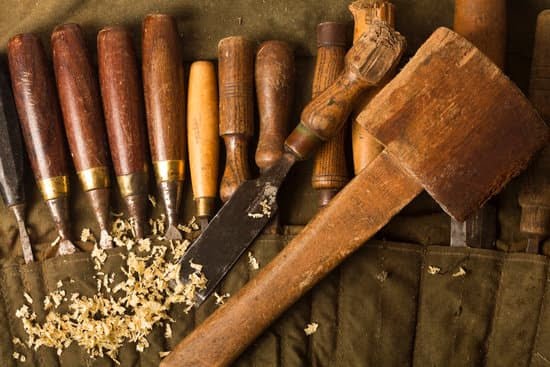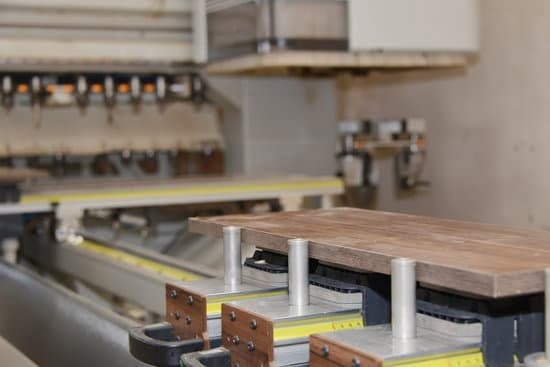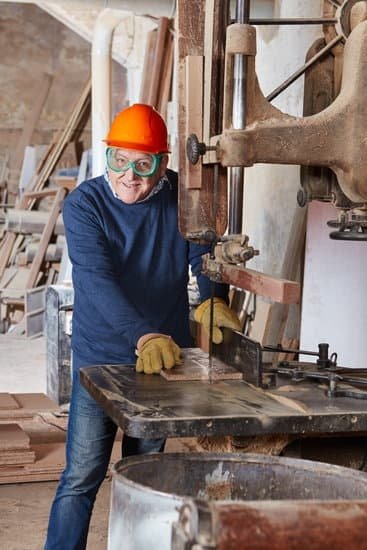Woodworking Angle Measuring Tools play a crucial role in the world of carpentry, allowing woodworkers to accurately measure and achieve precise angles in their projects. Whether you are building a bookshelf, constructing furniture, or creating intricate designs, having the right tools to measure angles is essential for achieving professional results. In this comprehensive guide, we will explore the different types of woodworking angle measuring tools available, why they are important, and how they can enhance your woodworking experience.
Accurate measurements and precise angles are fundamental aspects of any woodworking project. Without the proper tools to measure and confirm angles, it becomes challenging to ensure that each piece fits together seamlessly. Woodworking angle measuring tools provide carpenters with the ability to precisely calculate and cut angles, resulting in well-crafted pieces that fit together flawlessly.
In this article, we will delve into the various types of woodworking angle measuring tools commonly used by carpenters. From protractors and bevel gauges to miter saws and digital angle finders, understanding the different options available allows you to choose the best tool for each specific task.
We will also discuss the top 5 must-have woodworking angle measuring tools every carpenter should own, providing you with insights into which tools are essential for your collection. So stay tuned as we uncover everything you need to know about these indispensable instruments that elevate your woodworking game to new heights.
Understanding Different Types of Woodworking Angle Measuring Tools
Woodworking angle measuring tools are essential for carpenters and woodworkers to ensure accurate measurements and precise angles in their projects. Understanding the different types of woodworking angle measuring tools is crucial in selecting the appropriate tool for specific tasks. Here is a comprehensive guide to help you grasp the various types of woodworking angle measuring tools available.
Protractors
Protractors are one of the most common woodworking angle measuring tools used by carpenters. They typically consist of a flat base with an adjustable arm that pivots at the center. This tool allows woodworkers to measure or draw angles accurately, ranging from 0 to 180 degrees. Protractors come in both digital and analog versions, where digital options provide more precise measurements.
Bevel Gauges
Bevel gauges, also known as sliding bevels or T-bevels, are versatile woodworking angle measuring tools widely used in carpentry. They have a handle with a metal blade that can be adjusted to any desired angle. Bevel gauges are primarily used for transferring angles from existing objects or creating angles when cutting or fitting wood pieces together.
Combination Squares
Combination squares are multipurpose woodworking angle measuring tools consisting of a ruler and an adjustable square head at one end. The square head can be locked at any position along the ruler, allowing woodworkers to measure angles accurately and perform other tasks such as marking straight lines, checking for perpendicularity, and leveling surfaces.
Angle Finders
Angle finders, also known as digital inclinometers, are electronic devices designed to measure angles precisely. These tools feature a digital display that provides instant measurements when placed against an object’s surface or edge where an angle needs to be determined. Angle finders are particularly useful for tasks that require high accuracy, such as cabinetry, furniture making, and trim installation.
Miter Gauges
Miter gauges are essential tools for woodworking projects that involve angle cuts, such as making picture frames or molding. They consist of a sturdy base with a pivoting arm and an adjustable fence. The fence can be set at different angles to guide wood pieces accurately through a saw blade, allowing for precise miter cuts.
By understanding the different types of woodworking angle measuring tools available, carpenters and woodworkers can choose the appropriate tool based on their specific project requirements. Whether you need to measure or transfer angles, check for perpendicularity, or create precision angle cuts, these tools provide the accuracy and versatility needed to elevate your woodworking skills.
The Top 5 Must-Have Woodworking Angle Measuring Tools Every Carpenter Should Own
Woodworking involves precision and accuracy, and having the right angle measuring tools is crucial to achieve professional results. In this section, we will explore the top 5 must-have woodworking angle measuring tools that every carpenter should own.
- Combination Square: A combination square is a versatile tool that every woodworker should have in their toolbox. It consists of a ruler and a 90-degree angle measuring device, allowing you to measure angles accurately and mark them directly on your workpiece.
- Bevel Gauge: A bevel gauge is used to measure and transfer angles from one piece of wood to another. It has an adjustable blade that can be locked in place once the desired angle is set. This tool is particularly useful when cutting or fitting joints that require precise angles.
- Protractor: Protractors are essential for measuring and marking angles accurately. They are especially useful when working with large and complex projects where precision is key. Protractors come in various designs, such as digital or traditional ones made of plastic or metal.
- Angle Finder: An angle finder, also known as a miter gauge or digital protractor, helps determine the exact angle of a corner or joint. It allows you to read both inside and outside angles quickly and precisely, making it an invaluable tool for any woodworking project.
- Sliding T-Bevel: A sliding T-bevel is an adjustable tool that helps replicate existing angles or transfer them onto other workpieces accurately. It consists of a handle with a blade that can be locked at any desired angle, providing versatility for intricate woodworking tasks.
| Tool | Description |
|---|---|
| Combination Square | A versatile tool consisting of a ruler and a 90-degree angle measuring device. |
| Bevel Gauge | An adjustable tool used to measure and transfer angles between wood pieces. |
| Protractor | A tool for accurately measuring and marking angles on workpieces. |
| Angle Finder | A tool used to determine the precise angle of a corner or joint. |
| Sliding T-Bevel | An adjustable tool to replicate or transfer angles onto other workpieces. |
Investing in these must-have woodworking angle measuring tools will greatly enhance your accuracy and efficiency in woodworking projects. Whether you are a professional carpenter or an enthusiastic hobbyist, having these tools at hand will ensure that your finished products are of top-notch quality.
How to Choose the Right Woodworking Angle Measuring Tools for Your Project
Consider the Type of Woodworking Project
When choosing woodworking angle measuring tools, it’s important to consider the type of project you’ll be working on. Different projects may require different types of angles and measurements. For example, if you’re building furniture, you may need tools that can accurately measure complex angles and joinery. On the other hand, if you’re working on smaller woodworking projects like jewelry boxes or picture frames, simpler and more versatile tools may suffice.
Accuracy and Precision
One of the most important factors to consider when choosing woodworking angle measuring tools is their accuracy and precision. Accurate measurements are crucial for ensuring that your joints fit together perfectly and that your finished product is structurally sound. Look for tools that have clear markings and are made from high-quality materials to ensure precision in your measurements.
Ease of Use
Another important consideration when choosing woodworking angle measuring tools is ease of use. You want tools that are intuitive and comfortable to hold, allowing you to easily measure angles without straining or making errors. Consider the size, weight, and ergonomic design of the tool to ensure it feels comfortable in your hand during extended periods of use.
Durability and Quality
Woodworking angle measuring tools are an investment, so it’s essential to choose ones that are built to last. Look for tools made from durable materials like stainless steel or aluminum, as these materials are less prone to corrosion or damage over time. Additionally, check the overall quality of the tool, including its construction and craftsmanship. Investing in high-quality tools will not only give you accurate measurements but also ensure longevity in your woodworking journey.
By considering these factors when choosing woodworking angle measuring tools for your project, you can ensure that you have the right tool for the job at hand. Remember that investing in quality tools will make a noticeable difference in both the accuracy of your measurements and the overall quality of your finished woodworking projects.
Pro Tips and Techniques for Using Woodworking Angle Measuring Tools with Precision
When it comes to woodworking, precision is key. The use of woodworking angle measuring tools is essential in achieving accurate and professional results. In this section, we will explore some pro tips and techniques to help you use these tools with precision.
- Use a Marking Gauge: A marking gauge is a versatile tool that can be used to mark precise angles on your workpiece. To use it effectively, set the desired angle on the gauge and firmly hold it against the edge of the wood. Then, carefully drag the marking wheel along the surface, leaving a clear and accurate line.
- Always Check for Squareness: Before making any cuts or measurements, it’s crucial to ensure that your tools are square. Use a combination square or try square to check if your working surface or piece is at a 90-degree angle. This step will prevent any errors or inaccuracies in your measurements.
- Practice Proper Technique when Using an Angle Finder: An angle finder is an invaluable tool for determining precise angles. When using an angle finder, make sure to position the arms of the tool securely against the surfaces you want to measure. Take multiple measurements from different points to ensure accuracy.
Incorporating these pro tips and techniques into your woodworking routine will greatly enhance your precision when using angle measuring tools. Remember to always double-check your measurements before making any cuts or adjustments to avoid costly mistakes.
| Pro Tip/Technique | Description |
|---|---|
| Use a Marking Gauge | A marking gauge is a versatile tool that can be used to mark precise angles on your workpiece. |
| Always Check for Squareness | Before making any cuts or measurements, it’s crucial to ensure that your tools are square. |
| Practice Proper Technique when Using an Angle Finder | An angle finder is an invaluable tool for determining precise angles. |
Common Mistakes to Avoid When Using Woodworking Angle Measuring Tools
When it comes to woodworking angle measuring tools, accuracy is key. However, even with the best tools available, there are common mistakes that carpenters can make when using them. By being aware of these mistakes and taking steps to avoid them, woodworkers can ensure precise measurements and achieve the desired results in their projects.
One common mistake to avoid is not properly calibrating or zeroing out the measuring tool. Before starting any measurement, it is important to ensure that the tool is properly calibrated and set to zero. Failing to do so can result in inaccurate measurements and ultimately compromise the final outcome of the project. It is recommended to double-check the calibration before each use or at least on a regular basis.
Another mistake that woodworkers often make is relying solely on a single angle measuring tool. While having a go-to tool is convenient, different projects may require different types of angle measuring tools. For example, a protractor may work well for some angles, whereas a bevel gauge may be more suitable for others. Understanding the capabilities and limitations of each tool will help carpenters choose the most appropriate one for their specific needs.
Additionally, not paying attention to proper technique and stability when using angle measuring tools can lead to errors. It is important to securely hold both the measuring tool and the piece being measured to avoid any movement or shifting during the process. This can be achieved by using clamps or holding both objects firmly in place.
DIY Alternatives
Woodworking is a craft that often requires precise measurements and angles. While there are many woodworking angle measuring tools available on the market, sometimes, DIY alternatives can be just as effective. Whether you’re on a budget or enjoy the satisfaction of making your own tools, there are several creative ways to make your own woodworking angle measuring tools.
One simple and cost-effective DIY alternative is using a protractor in combination with a ruler or straightedge. While not specifically designed for woodworking, a protractor can be used to measure and mark angles accurately. By aligning the protractor’s center with the edge of your workpiece, you can then use the markings on the protractor to determine the desired angle. This method works well for both small and large carpentry projects.
Another DIY alternative is creating an adjustable angle tool using scrap wood or metal. Start by cutting two pieces of wood or metal of equal length. Attach one end of each piece together using hinges, allowing them to pivot freely.
On one side of the joint, attach a locking mechanism such as a bolt or wing nut that can secure both pieces together at various angles. This homemade adjustable angle tool can be used to measure and mark various angles by positioning it against the workpiece and tightening the locking mechanism.
For those who are more technologically inclined, smartphone apps are also viable DIY alternatives for woodworking angle measuring tools. There are numerous apps available that utilize the device’s built-in gyroscope and accelerometer to measure angles accurately. These apps typically offer features such as digital readouts, level indicators, and even an option to save measurements for future reference. Just ensure to calibrate your phone properly before use for accurate results.
While these DIY alternatives may not provide all the features and precision of professional woodworking angle measuring tools, they can be effective solutions for hobbyists or those working on simple projects. It’s important to keep in mind that accuracy is key when using any measuring tool, so double-check your measurements and make adjustments as necessary.
The Future of Woodworking Angle Measuring Tools
In recent years, the woodworking industry has seen incredible advancements in technology, and angle measuring tools are no exception. As we look to the future, there are several exciting innovations and trends that woodworkers should keep an eye on. These advancements have the potential to not only streamline the woodworking process but also enhance accuracy and efficiency.
One of the most significant innovations in woodworking angle measuring tools is the integration of digital technology. Digital angle gauges have become increasingly popular among professionals and hobbyists alike. These tools utilize sensors and a digital display to provide precise measurements, often with decimal point accuracy. They can also store multiple angles, allowing for quick reference during complex projects. With digital angle gauges, woodworkers can reduce errors caused by human interpretation and achieve more consistent results.
Another trend to watch out for is the development of laser-guided angle measuring tools. Laser-based devices offer instant and accurate measurements by projecting a beam onto the surface being measured. This eliminates the need for physical contact with the workpiece, making it ideal for intricate or delicate projects. Laser-guided angle measuring tools provide real-time feedback, allowing woodworkers to make adjustments on the fly and ensure perfect angles every time.
Additionally, 3D modeling and augmented reality technologies are beginning to play a role in woodworking angle measuring tools. Some manufacturers are exploring the use of AR headsets that overlay virtual measurements onto real-world objects. This innovative approach allows woodworkers to visualize angles before making cuts or joinery decisions, reducing mistakes and maximizing efficiency.
As technology continues to advance at an exponential rate, it’s safe to say that we can expect even more exciting innovations in woodworking angle measuring tools. From enhanced precision to increased efficiency, these developments will undoubtedly revolutionize how woodworkers approach their craft in the future. By embracing these innovations and staying up-to-date with emerging trends, craftsmen can elevate their woodworking game and produce exceptional results like never before.
Maintenance and Care Guide for Woodworking Angle Measuring Tools
Taking care of your woodworking angle measuring tools is crucial in order to keep them in optimal condition and ensure accurate measurements. Proper maintenance can also extend the lifespan of your tools, saving you time and money in the long run. In this section, we will explore some essential maintenance and care tips for woodworking angle measuring tools.
One important aspect of maintaining your angle measuring tools is keeping them clean. After each use, make sure to remove any dust, debris, or residue from the tool’s surface. This can be done using a soft brush or cloth. It is also recommended to periodically wipe down the tool with a mild cleaning solution to remove any stubborn marks or stains.
In addition to regular cleaning, it is vital to protect your woodworking angle measuring tools from moisture and rust. Make sure to store them in a dry location when not in use and avoid exposing them to water or high humidity environments. To further prevent rust formation, you can apply a thin layer of oil or lubricant on the metal parts of your tools.
Another important aspect of maintenance is checking and calibrating the accuracy of your angle measuring tools regularly. Over time, these tools may become misaligned or lose their accuracy due to wear and tear. To check if they are still providing accurate measurements, compare their readings with those from a known reference tool or device. If you find any discrepancies, you may need to recalibrate your tool following the manufacturer’s instructions.
By following these maintenance and care tips, you can ensure that your woodworking angle measuring tools remain accurate and reliable for many years to come. Regular cleaning, protecting them from moisture and rust, as well as checking their accuracy will help you achieve precise measurements in all your woodworking projects.
Conclusion
In conclusion, woodworking angle measuring tools play a crucial role in the world of carpentry. They are essential for achieving precision and accuracy in woodwork projects, ensuring that every angle is measured correctly and every joint fits perfectly. By understanding the different types of woodworking angle measuring tools available, carpenters can make informed choices about which tools to invest in based on their specific needs.
The top 5 must-have woodworking angle measuring tools that every carpenter should own include a combination square, bevel gauge, protractor, sliding T-bevel, and digital angle finder. These tools cover a wide range of measuring needs and allow carpenters to tackle various projects with ease. It is important to choose the right woodworking angle measuring tools for your project by considering factors such as accuracy, durability, and ease of use.
To use these tools with precision, it is essential to follow some pro tips and techniques such as marking reference points accurately, double-checking measurements, and using proper technique while taking measurements. Additionally, it is important to avoid common mistakes like rushing through measurements or neglecting to calibrate your tools regularly.
For those who enjoy a DIY approach or want alternatives to store-bought tools, creative ways to make your own woodworking angle measuring tools are available. However, it is crucial to ensure that these homemade alternatives are accurate and reliable before using them for any project.
Looking towards the future, innovations and trends in woodworking angle measuring tools promise exciting new features and advancements. From improved measurement technologies to ergonomic design enhancements, these innovations will likely enhance efficiency and accuracy in woodworking projects even further.
Finally, maintaining and caring for your woodworking angle measuring tools is vital for keeping them in optimal condition. Regular cleaning, storage in a dry place away from humidity or extreme temperatures, and occasional calibration will help prolong the lifespan of these valuable tools.
Frequently Asked Questions
What tools do you use for measuring angles in woodworking?
In woodworking, there are several tools that can be used for measuring angles. One of the most commonly used tools is a protractor. Protractors are typically made of transparent plastic or metal and consist of a semi-circular disc with angle markings.
With a protractor, woodworkers can measure both small and large angles by aligning the center point of the protractor with the vertex of the angle and reading off the measurement on the scale. Another useful tool for measuring angles in woodworking is an adjustable bevel gauge. This tool consists of a handle connected to an adjustable blade that can be set to various angles and locked in place.
What is the most accurate angle measuring tool?
When it comes to accuracy, digital angle finders are considered one of the most accurate angle measuring tools available for woodworking. These devices use electronic sensors to determine precise measurements of angles, often down to tenths or even hundredths of a degree.
Digital angle finders provide instant readings, making them convenient and efficient for woodworking tasks such as miter cuts or setting up machinery at precise angles. By eliminating human error and ensuring consistent measurements, they offer a higher level of accuracy compared to traditional manual measuring tools.
What tool is used to measure an angle?
A tool commonly used to measure an angle is a protractor. Protractors have been around for centuries and remain one of the simplest yet effective tools for this purpose. Protractors typically consist of a semi-circular disc with degree markings along its curved edge and a center point representing the vertex of the angle being measured.
To use a protractor, you align its center point with the vertex of the angle and read off the measurement indicated on the scale corresponding to where one side of the angle intersects the curved edge. Protractors come in different sizes and materials, but their basic functionality remains consistent across variations.

Hi everyone! I’m a woodworker and blogger, and this is my woodworking blog. In my blog, I share tips and tricks for woodworkers of all skill levels, as well as project ideas that you can try yourself.





